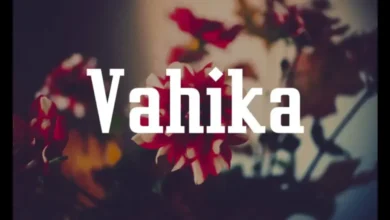How to Execute Effective Brand Storytelling Via Custom Packaging


Custom packaging offers a unique canvas for brands to tell their story in a tangible and memorable way.
In the dynamic landscape of modern marketing, storytelling has emerged as a powerful tool for brands to connect with consumers on a deeper level.
By weaving narratives that resonate with their audience, brands can forge emotional connections, build trust, and differentiate themselves in a crowded marketplace.
In this article, we’ll explore strategies for executing effective brand storytelling through custom packaging.
1. Define Your Brand Narrative
Crafting Your Brand Story
Before diving into packaging design, it’s essential to define your brand narrative—the story that encapsulates your brand’s identity, values, and mission.
Consider the journey that led to the founding of your brand, the values that drive your business, and the impact you aspire to make in the world.
Your brand narrative will serve as the foundation for crafting compelling storytelling through custom packaging.
Identify Key Themes and Messages
Identify key themes, messages, and storytelling elements that align with your brand narrative.
Whether it’s highlighting your commitment to sustainability, celebrating cultural heritage, or championing innovation, choose themes that resonate with your target audience and differentiate your brand from competitors.
2. Integrate Storytelling Elements into Packaging Design
Visual Storytelling Elements
Custom packaging provides an opportunity to incorporate visual storytelling elements that bring your brand narrative to life. Even liquid packaging can benefit from creative design in certain areas of custom printing.
Consider using illustrations, graphics, and imagery that evoke emotions, convey your brand’s personality, and communicate key messages.
From iconic symbols to evocative landscapes, visual storytelling elements can captivate consumers and leave a lasting impression.
Typography and Messaging
Typography plays a crucial role in brand storytelling, setting the tone and conveying the brand’s voice.
Choose fonts that reflect your brand’s personality—whether it’s bold and confident or elegant and refined.
Craft messaging that complements your visual storytelling, conveying your brand’s values, mission, and product benefits in a clear and compelling manner.
3. Create an Engaging Unboxing Experience
Unveiling the Narrative
The unboxing experience offers a prime opportunity to immerse consumers in your brand narrative.
Choose the best packaging format and design custom packaging that unfolds like a story, with each layer revealing a new chapter in your brand’s journey.
Incorporate surprises, interactive elements, and personalized touches that engage consumers and invite them to become part of your brand story.
Tell a Story with Inserts and Inserts
Custom inserts and inserts provide additional space to deepen your brand storytelling. Include inserts that share anecdotes, testimonials, or behind-the-scenes glimpses into your brand’s creative process.
Consider incorporating QR codes or NFC tags that link to multimedia content, such as videos or podcasts, allowing consumers to further explore your brand narrative.
4. Consistency Across Product Lines
Cohesive Brand Experience
Maintaining consistency across different product lines is essential for ensuring a cohesive brand experience. There are so many costly mistakes that can be had when looking at cohesion.
Develop a visual language and design system that can be applied consistently across all custom packaging designs.
From color palettes to design elements, consistency reinforces your brand’s identity and makes it easier for consumers to recognize and connect with your brand.
Customization for Each Product Line
While consistency is crucial, customization allows you to tailor your brand storytelling to each product line’s unique characteristics and target audience. Consider how you can adapt your brand narrative to resonate with different consumer segments or product categories while maintaining overarching brand coherence.
Customization adds depth to your storytelling and enhances consumer engagement.
5. Incorporate Interactive and Sustainable Elements
Interactive Packaging Experiences
Interactive packaging experiences create memorable moments that resonate with consumers long after they’ve made a purchase.
Consider incorporating interactive elements such as hidden messages, puzzles, or AR/VR experiences that invite consumers to actively engage with your brand narrative. Interactive packaging fosters a sense of playfulness and curiosity, deepening consumer connections with your brand.
Sustainable Storytelling
Incorporating sustainable packaging materials and practices into your brand storytelling reinforces your commitment to environmental stewardship and resonates with eco-conscious consumers.
Use custom packaging as a platform to share your sustainability journey, highlighting initiatives such as recyclability, biodegradability, or upcycling.
Sustainable storytelling demonstrates your brand’s values in action and builds trust with consumers who prioritize environmental responsibility.
6. Solicit Feedback and Iterate
Continuous Improvement
Brand storytelling is an ongoing process that evolves over time. Solicit feedback from consumers, employees, and industry peers to gain insights into how your brand narrative is resonating and where there may be opportunities for improvement.
Use data analytics and consumer feedback to iteratively refine your custom packaging designs and storytelling strategies.
Adaptation to Consumer Insights
Pay attention to consumer insights, market trends, and cultural shifts that may impact your brand narrative.
Stay agile and adaptable, continuously refining your storytelling approach to remain relevant and compelling in the eyes of your target audience.
By listening to your consumers and responding to their needs and preferences, you can strengthen your brand storytelling and drive deeper consumer engagement.
Conclusion
Custom packaging offers a powerful platform for executing effective brand storytelling, allowing brands to connect with consumers on an emotional level and differentiate themselves in a competitive market.
By defining your brand narrative, integrating storytelling elements into packaging design, creating engaging unboxing experiences, maintaining consistency across product lines, incorporating interactive and sustainable elements, and soliciting feedback to iterate and improve, you can craft compelling brand narratives that resonate with consumers and drive brand loyalty.
In today’s increasingly visual and experiential marketplace, custom packaging is more than just a container—it’s a storyteller that brings your brand to life in the hearts and minds of consumers.





